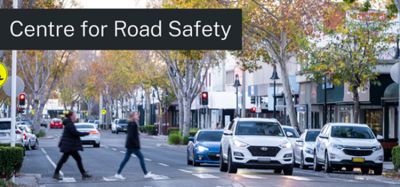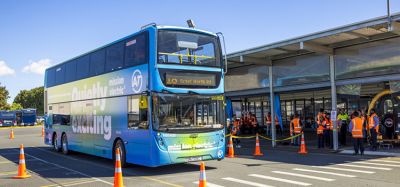Who’s looking out for delivery riders and drivers? Road safety and the gig economy
- Like
- Digg
- Del
- Tumblr
- VKontakte
- Buffer
- Love This
- Odnoklassniki
- Meneame
- Blogger
- Amazon
- Yahoo Mail
- Gmail
- AOL
- Newsvine
- HackerNews
- Evernote
- MySpace
- Mail.ru
- Viadeo
- Line
- Comments
- Yummly
- SMS
- Viber
- Telegram
- Subscribe
- Skype
- Facebook Messenger
- Kakao
- LiveJournal
- Yammer
- Edgar
- Fintel
- Mix
- Instapaper
- Copy Link
Posted: 6 August 2021 | Dr Neale Kinnear, Victoria Pyta | No comments yet
Delivery riders and drivers have helped to keep many of us safe and sane whilst isolating and social distancing during the COVID-19 pandemic, but who’s looking out for them? For Intelligent Transport, TRL’s Dr Neale Kinnear, Head of Transport Safety, and Victoria Pyta, Senior Psychologist – Behavioural Science and Human Factors in Transport, give their thoughts.


Since the onset of COVID-19, there has been a growing army of gig-economy1 riders delivering takeaway food, as well as delivery van drivers supplying shopping and parcels. Supermarkets experienced a rapid increase in demand for grocery deliveries and hired thousands of delivery drivers between March and May 2020. Meanwhile, food delivery organisations such as Deliveroo and Just Eat have signed up tens of thousands of new drivers and riders over the last year, more than doubling their total pool. The service of these drivers and riders has supported large segments of our community with food and essential goods while doing our best to “stay at home and protect the NHS”. Sadly, the safety of these drivers and riders is being overlooked.
Even prior to 2020, the gig economy was on the rise. 2019 research conducted by the Trades Union Congress (TUC)2 found that the number of people participating in the gig economy had doubled over the preceding three years. The survey revealed that nearly one in 10 working-age adults were working via gig economy platforms at least once a week in 2019, compared to 1 in 20 in 2016. In total figures, this accounted for 4.7 million workers compared to 2.3 million three years earlier. The study also found an over-representation of young people – who are at higher risk on the road due to their age and inexperience – with nearly two-thirds (60 per cent) of intensive (at least once a week) platform workers aged 16-34.
Safety issues
Aspects of the gig-economy model of work are likely to contribute to unnecessary road risk. UCL researchers found that the gig-economy model of work can lead to drivers and riders feeling under significant pressure to engage in unsafe driving behaviours including:
- Exceeding speed limits to try to meet deadlines
- Interacting with their smartphone while driving/riding (for example, to accept and reject jobs and navigate)
- Driving while fatigued from excessive hours of work and/or mental overload3.
Sadly, there have been several fatalities and serious injuries involving delivery riders in the last year, and likely many unreported injuries that have affected the livelihoods of workers and their families. A senior coroner reviewing the case of a delivery rider killed when he rode into the back of a stationary HGV without any aversive movement, stated his concern that the crash may have been caused by the rider being distracted by his smartphone, emphasising the potential implications of smartphone use on the safety of delivery riders4.
Learning lessons from elsewhere
Following a spate of fatalities involving delivery riders in Sydney, Australia, increased government scrutiny of the issue led to the creation of the Joint Taskforce: Food Delivery Rider Safety5. In December last year, the taskforce hosted a forum with stakeholders representing delivery riders, contracting businesses, food delivery platforms, work health and safety regulators, road safety regulators, leading research centres and community members. Recent guidelines6 published by the Taskforce highlighted fatigue, unreasonable delivery times, poorly designed apps and use of unsafe vehicles as key hazards and placed the onus on delivery platforms to find solutions.
At the end of March 2021, six food delivery platforms were served with improvement notices after a compliance blitz conducted in Sydney by SafeWork (one of the Taskforce leaders) revealed widespread non-compliance with New South Wales’ Workplace Health & Safety laws. More than 90 per cent of riders had inadequate personal protective equipment and more than half could not demonstrate any work safety protocols having been provided to them7.
In Europe, the employment models of gig companies are being increasingly challenged with numerous protests held. In response, Madrid’s government announced it would introduce a decree to give employee status to gig delivery workers following a national court ruling last year. More recently, in Italy, a Milan court fined food delivery platforms €733 million for violating employment safety laws and said riders should be hired on a quasi-employee basis8.
Taking responsibility
Employees on zero hours contracts are held at arm’s length by contracting businesses hoping to minimise their costs, partly by divesting responsibilities. However, the recent UK Supreme Court ruling that Uber drivers on zero-hours contracts are employees and not self-employed contractors9 makes it clear this is not acceptable.
The ruling – guaranteeing 70,000 UK drivers and riders a minimum wage, holiday pay and pensions – is likely to have wider implications for similarly structured businesses reliant on gig-economy workers. It sends a clear message that operators must share responsibility for their drivers and riders’ wellbeing. This has been followed by calls10 to extend the new employment rights of the drivers to the safety standards applied to gig economy vehicles.
UK Health and Safety legislation clearly states that contracting organisations are responsible for managing the risks associated with the work that they control. It also enables enforcement agencies and courts to look beyond the ‘self-employment’ label and consider the way the employment relationship operates, including the level of control a worker has over the way they work. If an employee is killed while driving for work, and there is evidence that serious management failures resulted in a ‘gross breach of a relevant duty of care’, the company or organisation could be at risk of being prosecuted under the Corporate Manslaughter and Corporate Homicide Act 2007. The recent Supreme Court ruling may mean that investigators are more likely to look beyond the ‘self-employment’ label.
The question marks around the safety of gig economy workers and where responsibility lies have been reflected in the actions of investment firms. For example, Aviva Investors and Aberdeen Standard both publicly declared they will not participate in the public flotation of Deliveroo due to the misclassification of workers as self-employed11.
Resolving the problem
On the back of recent landmark court rulings across various countries, TRL is calling for further research into work-related road safety in relation to the gig-economy. With strong growth likely to continue well into the future, now is the time to make changes to ensure workers are protected.
With many years of experience in work-related road safety research, TRL is well placed to help government and businesses to understand and address this problem. We recommend these initial steps to addressing the issues:
- Analysis of the extent and nature of the problem
- Consultation with stakeholders and development of a joint taskforce to explore root causes and solutions collaboratively with employees, organisations and authorities
- Human factors analysis of apps and work models to identify opportunities to minimise controllable risks.
References
- The term ‘gig economy’ is being used here to describe systems of work where people get paid per task (or ‘gig’) and in which service providers are linked to service users via an app or other digital platform.
- https://www.tuc.org.uk/news/uks-gig-economy-workforce-has-doubled-2016-tuc-and-feps-backed-research-shows
- https://www.ucl.ac.uk/news/2018/aug/gig-economy-drivers-and-riders-heightened-risk-traffic-collisions
- https://www.basingstokegazette.co.uk/news/19050799.senior-coroner-raises-concerns-food-delivery-riders-using-smartphones-fatal-crash-basingstoke/
- https://www.safework.nsw.gov.au/compliance-and-prosecutions/joint-taskforce-food-delivery-rider-safety
- https://www.smartcompany.com.au/people-human-resources/industrial-relations/gig-economy-joint-taskforce-safety-guidelines/
- https://www.miragenews.com/gig-economy-warned-to-prioritise-driver-safety-535967/
- https://www.ft.com/content/6bf8ea68-d035-4cc0-a367-a545c2814355
- https://www.bbc.co.uk/news/business-56123668
- https://fleetworld.co.uk/gig-economy-driver-safety-standards-should-be-extended-to-vehicles/
- https://www.cityam.com/deliveroo-ipo-is-the-gig-economy-empire-crumbling/




Related topics
COVID-19, Vehicle & Passenger Safety, Workplace
Issue
Issue 2 2021
Related organisations
Trades Union Congress (TUC), Transport Research Laboratory (TRL)
Related people
Dr Neale Kinnear, Victoria Pyta








